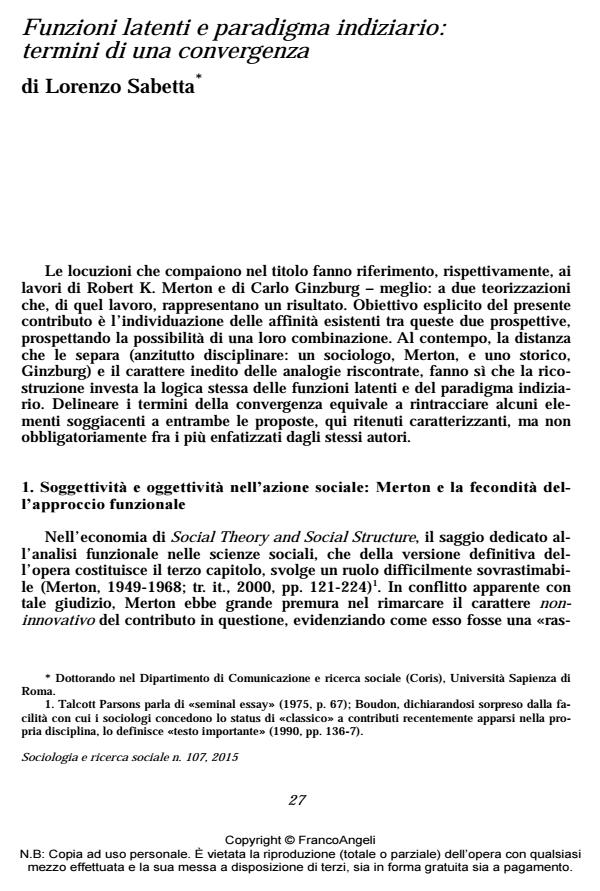Funzioni latenti e paradigma indiziario: termini di una convergenza
Titolo Rivista SOCIOLOGIA E RICERCA SOCIALE
Autori/Curatori Lorenzo Sabetta
Anno di pubblicazione 2015 Fascicolo 2015/107
Lingua Italiano Numero pagine 22 P. 27-48 Dimensione file 106 KB
DOI 10.3280/SR2015-107002
Il DOI è il codice a barre della proprietà intellettuale: per saperne di più
clicca qui
Qui sotto puoi vedere in anteprima la prima pagina di questo articolo.
Se questo articolo ti interessa, lo puoi acquistare (e scaricare in formato pdf) seguendo le facili indicazioni per acquistare il download credit. Acquista Download Credits per scaricare questo Articolo in formato PDF

FrancoAngeli è membro della Publishers International Linking Association, Inc (PILA)associazione indipendente e non profit per facilitare (attraverso i servizi tecnologici implementati da CrossRef.org) l’accesso degli studiosi ai contenuti digitali nelle pubblicazioni professionali e scientifiche
The aim of this contribution is to reconstruct the affinity existing between the concept of latent function (R.K. Merton) and the notion of evidential paradigm (C. Ginzburg). The article raises the possibility of a combination of the two perspectives, from a methodological and trans-disciplinary point of view. The unprecedented nature of the similarities found forces to re-examine the underlying logic in the latent functions as well as in the evidential paradigm, emphasizing some elements that appear not necessarily clear to the authors themselves
Lorenzo Sabetta, Funzioni latenti e paradigma indiziario: termini di una convergenza in "SOCIOLOGIA E RICERCA SOCIALE " 107/2015, pp 27-48, DOI: 10.3280/SR2015-107002